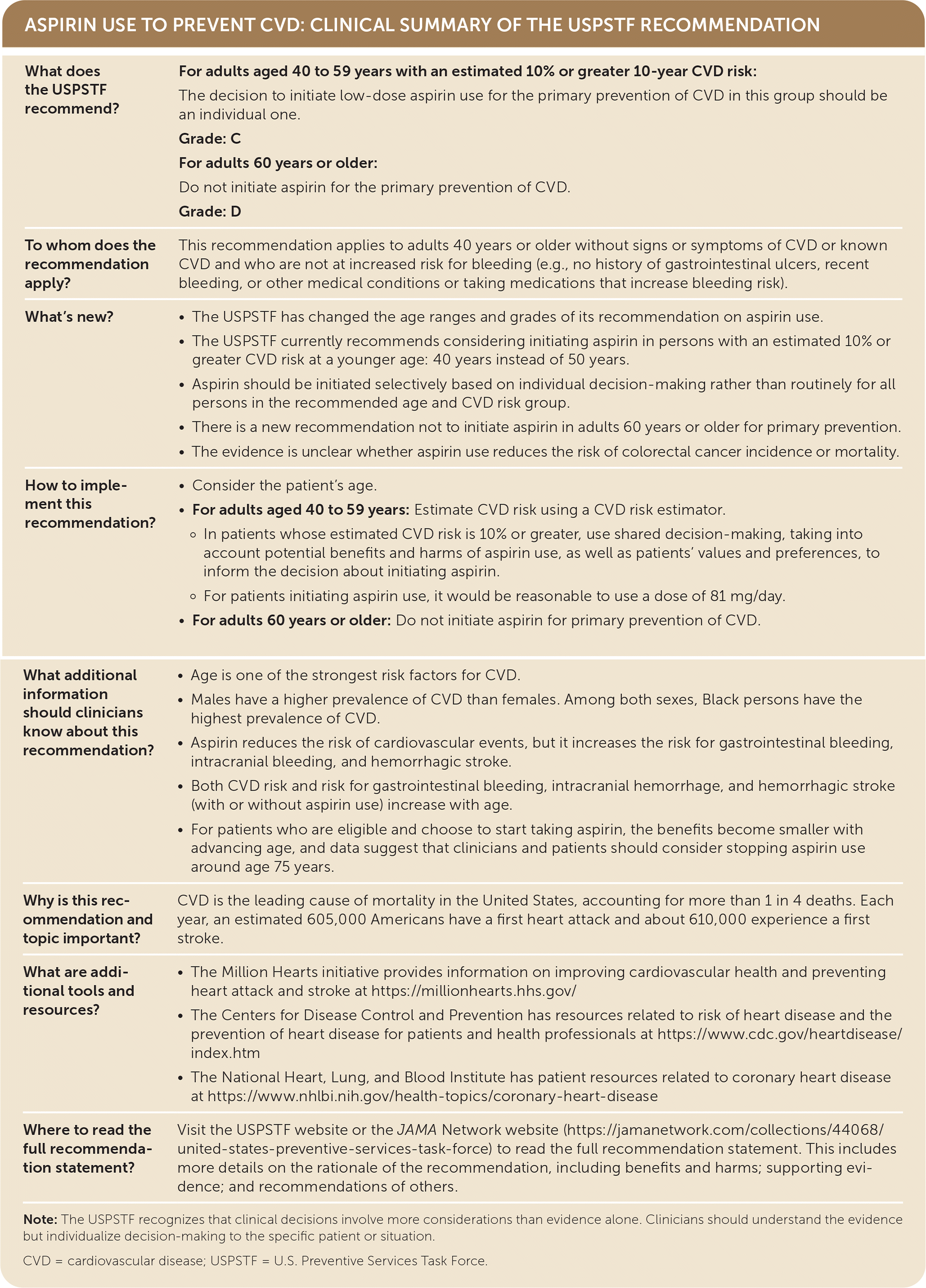
Am Fam Physician. 2022;106(3):online
Related Putting Prevention Into Practice: Aspirin Use to Prevent Cardiovascular Disease
As published by the USPSTF.

| What does the USPSTF recommend? | For adults aged 40 to 59 years with an estimated 10% or greater 10-year CVD risk: The decision to initiate low-dose aspirin use for the primary prevention of CVD in this group should be an individual one. Grade: C For adults 60 years or older: Do not initiate aspirin for the primary prevention of CVD. Grade: D |
| To whom does the recommendation apply? | This recommendation applies to adults 40 years or older without signs or symptoms of CVD or known CVD and who are not at increased risk for bleeding (e.g., no history of gastrointestinal ulcers, recent bleeding, or other medical conditions or taking medications that increase bleeding risk). |
| What's new? |
|
| How to implement this recommendation? |
|
| What additional information should clinicians know about this recommendation? |
|
| Why is this recommendation and topic important? | CVD is the leading cause of mortality in the United States, accounting for more than 1 in 4 deaths. Each year, an estimated 605,000 Americans have a first heart attack and about 610,000 experience a first stroke. |
| What are additional tools and resources? |
|
| Where to read the full recommendation statement? | Visit the USPSTF website or the JAMA Network website (https://jamanetwork.com/collections/44068/united-states-preventive-services-task-force) to read the full recommendation statement. This includes more details on the rationale of the recommendation, including benefits and harms; supporting evidence; and recommendations of others. |
The full recommendation statement is available at https://www.uspreventiveservicestaskforce.org/uspstf/recommendation/aspirin-to-prevent-cardiovascular-disease-preventive-medication.
The USPSTF recommendations are independent of the U.S. government. They do not represent the views of the Agency for Healthcare Research and Quality, the U.S. Department of Health and Human Services, or the U.S. Public Health Service.
